Roots: The Impact of Black Music on America and the World

The essence of music is to reflect the times and by doing so, recreate the times.
Long before Rap and Hip-hop dominated the music culture, Black Music had a profound influence on the culture of the United States and the world. From the turn of the 20th century to modern times, African American music has been the heartbeat of America and emulated around the world.
The roots of this uniquely American music lay in those rhythms emanating from the same continent that gave birth to humankind. It was from the shores of Africa that slaves were imported to the Americas in droves, bringing with them the core of the music that would later engulf the world.
Stripped of their humanity and burden with shackled labor driven by the ominous sting of the whip, slaves, in the form of their music, held on to the only piece of their homeland that they could truly embrace. It was music borne of their struggles, of their experiences in a foreign land that professed liberty and justice for all, yet treated them like livestock, unworthy of the amenities of humanity in a nation under God.
Music was a release from the toils and burdens of slavery. Slaves were forbidden to use drums because slave masters believed that drums could be used to send messages to other plantations. Yet in this trouble milieu, they found a way to save their souls through the magic of their instruments. Some, like the banjo, were fashioned by their hands, others like the fiddle were provided by their masters. They sang not out of happiness or merriment, but out of a desire to be free. Although their hands and feet were often shackled; their souls remained unchained.
One of the earliest expressions of Black Music was the cakewalk. It was a dance performed as a contest in which music was played while slaves did a cakewalk to the beat, often making fun of old master without his knowledge. The winner won a cake or took the cake, which is the source of the idiom cakewalk used today. In the late 1800s, artists such as Ernest Hogan and Bob Cole brought this music to off-Broadway.
The rhythms and lyrics of Black Music could be found throughout America. For instance, Dixie, the battle song of the South, was borne from the 1859 minstrel song performed by D.D. Emmett who imitated Black Music in blackface during his minstrel act. It was so popular in the South that it was played at Confederate President Jefferson Davis’s inauguration in February 1861 and it later became synonymous with the South itself. (Dixieland). .
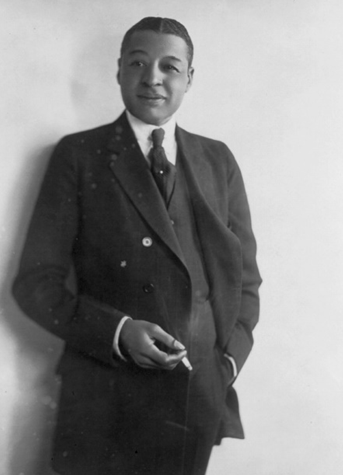
Perhaps one of the greatest black artists of the minstrel era was Burt Williams (1874–1922), who was not only known for his musical compositions but also for his ability to entertain on stage. Unfortunately, to appease white audiences, talented musicians like Williams often dressed in blackface to promote the image of the servile Negro. He was the mentor and friend of W.C. Fields.
The 1893 Columbian Expedition held in Chicago to celebrate the 400th anniversary of Columbus’ landing was a display of the new America and a presage of myriad innovations: electricity, the telephone, the microphone, the phonograph, motion pictures, automobiles, airplanes, etc. that changed, not only America but the world. It also gave birth to a new form of music that would define the turn of the 20th century.
The invention of the phonograph by Thomas Edison provided a new conduit for black musicians to display their craft. Before the popularity and convenience of records, sheet music, often played in the homes of white America by white women, was the principal source of revenue.
The bourgeoning of America was reflected in its music. The Statue of Liberty, inspired by the abolition of American slavery and gifted to America in 1886, now stood as an emblemed of freedom for European immigrants. America became a melting pot for people of European descent. Yet African Americans remained in a separate cauldron heated by racism, bigotry and discrimination.
Ragtime emerged and would dominate the first fifteen years of the 20th century. At its core were the syncopated techniques rooted in African music. This method was known as “ragging a tune” in which any tune could be improvised while maintaining its harmonic structure. Just like there were cakewalk contests, there were ragtime contests in which musicians ragged over a standard composition.
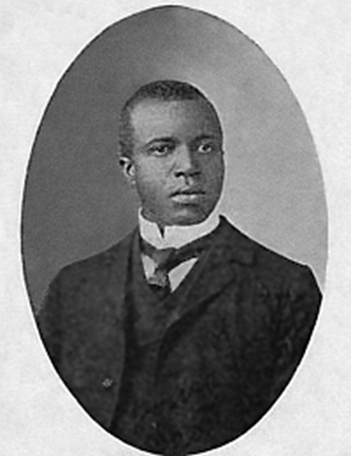
Scott Joplin’s (1868–1917) is often referred to as the father of ragtime. Maple Leaf Rag (1899), The Entertainer (1902) and Elite Syncopation (1902) are among his most popular songs and prime examples of syncopation that defined the music.
The 1973 movie, The Sting, featured his music and stands as a testimony of its enduring nature and ability to capture the temperament of the times. Joplin’s music also influenced white composers such as Irving Berlin (frequently referred to as the man who was American music). Berlin’s first major international hit was Alexander’s Ragtime Band in 1911, although Piano Man (1910) was also popular.
Ragtime was followed by a flurry of the Blues. W.C. Handy was among the first to popularize this music with the introduction of Memphis Blues (1912) and St Louis Blues (1914). This music primarily consisted of a 12-bar structure featuring three cords (I, IV, V) and incorporated call and response techniques rooted in the slave songs sung on plantations. The Blues also incorporated the use of “blue notes” and the blues scale (I, IIIb, IV, V, VIIb) and is often used as the principal source of improvisation. The genius of the Blues is rooted in its simplicity and its ability to transform raw emotion into a coherent sound.

Handy was followed by a string of female vocalists most noted were Ma Rainey, Bessie Smith, Ethel Waters and Billie Holiday “Lady Day” whose life was chronicled in the hit movie Lady Sings the Blues. The racy lyrics of these songs were embraced by the youth of the day, which helped to change the social landscape of succeeding generations. Although the walls of segregation were still in place, it was the allure of Black Music that helped to bring the walls tumbling down. Male singers such as Charlie Jackson and Huddie Letbetter (Leadbelly} help to propagate the Blues while setting the foundations of Country Music.
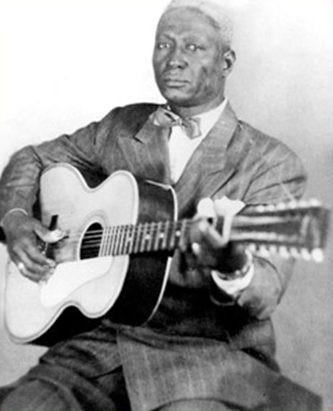
The Blues was further enhanced by Muddy Waters, John Lee Hooker, B.B. King and others. Blues and Gospel Music are two sides of the same coin. Some have argued that Gospel Music is a saintly version of the Blues: singing and praying at the same time. Perhaps best portrayed by the music of Mahalia Jackson. The sound of the Blues never truly went away, but rather was integrated into other styles of music. For generations to come, the Blues was the undercurrent of the musical river that flowed across America and eventually poured into the oceans of the world.
Jazz (often referred to as America’s original art form) was the culmination and fusion of previous African American music. So much so that it is hard to discern the lines between early Jazz, Ragtime and the Blues. Although Jelly Roll Morton, is the self-proclaimed father of Jazz, the origin is the product of its times and not a single individual. Some of the earliest Jazz musicians, including Morton were former ragtimers that helped to transform the music.
Among some of the earliest Jazz musicians were: Eubie Blake, King Oliver, and Louis Armstrong; the latter was the first to receive national recognition and fame and did much to form the foundation of Jazz. The key to Jazz is real-time syncopated improvisation of melodies over a harmonic structure. This musical artform was ripe for the post-World War I “Roaring Twenties” often referred to as the Jazz Age: the latter a moniker given to the decade by F. Scott Fitzgerald.

Many argue that the roots of Jazz emanated from the funeral marches of New Orleans and the Dixieland bands. On the way to the gravesite, a slow somber and melancholy tune was heard. However, on the way back, a more joyous and uplifting song was played as if to raise the soul of the deceased to the gates of heaven where the saints could come marching in. The essence of Dixieland Jazz was its syncopated polyrhythmic sound often including several melodies simultaneously. Since this music was in existence before the microphone, it often included instruments such as horns and the banjo that could be heard clearly without amplification.
The invention of the microphone in the mid-twenties changed the face of Jazz and music forever; because it allowed the inclusion of instruments such as the guitar and enabled vocalists to be heard over the band. It was also during the 20s that white musicians, like Frank Sinatra, Bing Crosby, Al Jolson, and others began to emulate black Jazz musicians.
The 20s was also the beginning of the Harlem Renaissance, a rebirth and merger of black literature, music, and fashion located in Harlem, NY. It was the Who’s Who of black folk and a place where they could celebrate, mingle and be proud of their African heritage. It featured white and black patrons, who for a moment, could be kindred spirits in the post-World War I age of prohibition and organized crime.
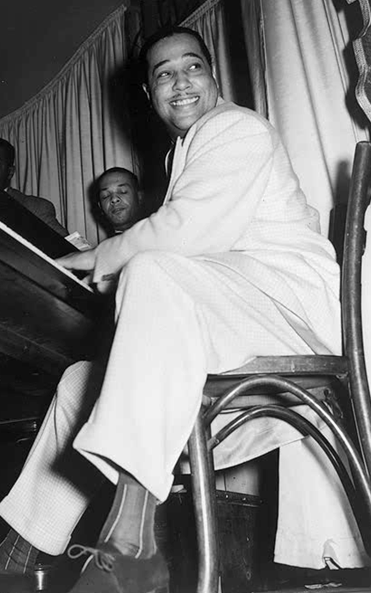
The 1930s introduced Swing Jazz; a form of Jazz that abandoned the polyphonic lines in favor of a homophonic mainstream swing. One of the early giants of this art form was Fletcher Henderson. Along with Duke Ellington, Cab Callaway, Count Basie, and others, he helped to define the Swing and Big Band era which dominated the 1930s and 40s.
This era also saw the increase of white musicians and singers such as Benny Goodman, Tommy and Jimmy Dorsey, Bing Crosby, Glen Miller and others that made white audiences embrace Jazz as their own. Unlike the Roaring Twenties, the 30s was the decade of the depression, and the music of this era was full of hope. Nat King Cole was one of the popular black singers of the late-30s and the World War II years. From the waning of the depression and through the waxing of another world war; Swing and the Big Band sound was the beacon of hope amid a sea of despair.
But it was not the only beacon. This era also produced the Boogie Woogie happy sound which had its roots in the African American community as far back as the 20s. In fact, The Boogie Woogie Bugle Boy, by the Andrew Sisters, was an iconic hit during World War II. Boogie Woogie was essentially the piano Blues with a repeated baseline in the left hand and varying melodies in the right.
The post-World War II era saw the emergence of Rock and Roll and Bebop Jazz. After two decades of stress, the music of the 50s, once again led by African American musicians, migrated toward a free and open style; and the leitmotif of white musicians imitating black artists continued. Between the two world wars, records and radio were the mediums of musical expression. The 50s, however, gave rise to a new medium called television; and by the end of the decade, it was a staple in most American homes.
Former Big Band singers such as Frank Sinatra, Doris Day and others emerged from the shadows of the Big Band as television raised the singer above the band. Musicians were no longer relegated to live shows, radio and records, which ushered in a new era of stardom hitherto unseen. Doris Day was pretty, and Sinatra was handsome; such features were enhanced by the magic of television.

Undeterred by what many viewed as the annexation and commercialization of their music by white singers and musicians, black artists created new forms of music that once again, became the signature of the decade. The chief architects of Bebop Jazz were Dizzy Gillespie on trumpet, Charlie Parker on saxophone, Thelonious Monk on piano, Max Roach and Kenny Clarke on drums and Charles Mingus on bass. This style of jazz was a referendum on Swing and the Big Band sound.
It was common for Beboppers to improvise over the harmony of popular songs, thus giving the song a new life and sometimes a new name. Although the principal timekeeping remained the responsibility of the drummer, more and more of this responsibility was given to the bass player, an evolution that continued in other Jazz forms. Also popular in the late-fifties and early sixties was the smooth guitar playing of West Montgomery and Grant Green. Both were influenced by the playing style of Charlie Cristian one of the first Jazz guitarists.
Cool Jazz was introduced in the-50s by, Miles Davis: the premier disciple of Gillespie and Parker. Although Davis was a gifted musician, he was a much better teacher who recognized talent and helped musicians develop their musical voice. Chief among them were: saxophonists John Coltrane and Wayne Shorter, pianists Herbie Hancock, Chick Chorea, Joe Zawinul, guitarist John McLaughlin and bassist Ron Carter. Many became leaders of Jazz Fusion bands. Unlike Bebop and Swing, Cool Jazz was so cool and quiet that you could snap to it, but you couldn’t clap to it. Even though Jazz was popular in the United States, many Jazz musicians such as Miles, found Europe, particularly France, more appreciative of their music.
The most innovative of Miles’ protégés was John Coltrane. He is not only renowned for his music but in some circles worshiped as a saint. In fact, he is the patron saint of John Coltrane Orthodox Church in San Francisco. In the late 50s, Coltrane had a spiritual epiphany the helped him to kick drugs and this spiritual experience was reflected in his music. He is consistently considered the quintessential Jazz saxophonist, often imitated but never duplicated
The Boogie Woogie sound of the 40s was extended to form the foundation of the Rock and Roll craze of the 50s and once again it started with America’s youth. In the post-World War II years, America emerged as the undisputed leader of the free world and the standard-bearer of democracy around the world. With the threat of Armageddon looming over the world in the form of Nuclear War and the more immediate threat of the Soviet Union in the form of the Cold War, the 50s was a transitional decade and a prelude to “the race for space.” America was not only seen as a military power, but it was also viewed as a new cultural center and the musical Mecca of the world.

Rock and Rollers were perhaps the biggest beneficiaries of television. It provided a forum for showmanship and was seen and heard simultaneously in cities and small towns across America. African American musicians such as Chuck Berry, Little Richard, Fats Domino and Bo Diddley were the trendsetters of this new genre. The 50s saw the incorporation, many argue the imitation, of this style of music by white musicians. Record companies quickly realized that more money could be made by having white artists perform black songs.
Elvis Presley became the dominant figure of this style of music, not because he was the best or the most innovative, but because white youth could identify with him. Young white girls could think of Elvis and other white singers as being cute or sexy, but they could not think of any black male singer in this way. During the 50s, as in the decades before, interracial marriages were not only deemed taboo, but against the law in some states.
The introduction of televisions shows such as American Bandstand, hosted by the legendary Dick Clark and the Ed Sullivan Show, launched Rock and Roll into the public sphere. Such changes were not welcomed by all, as the merger of Black Music and whites dancing alongside blacks disturbed many during an era when segregation and “separate but equal” laws were being challenged in the highest court in the land. Many whites, particularly in the South, viewed Rock and Roll as the corruption of the white youth and the smearing of the color line long held between the two races.
Other technological inventions of the late 40s also contributed to the advancement of Rock and Roll in the 50s. The electric guitar was further enhanced by Leo Fender and Less Paul. Additionally, Columbia Records released the first 12-inch LP which allowed musicians to experiment. The 45 rpm smaller record provided enough space for a three-minute song to be recorded on one side and another on the flip side. These innovations set the stage for the music of the 60s and beyond.
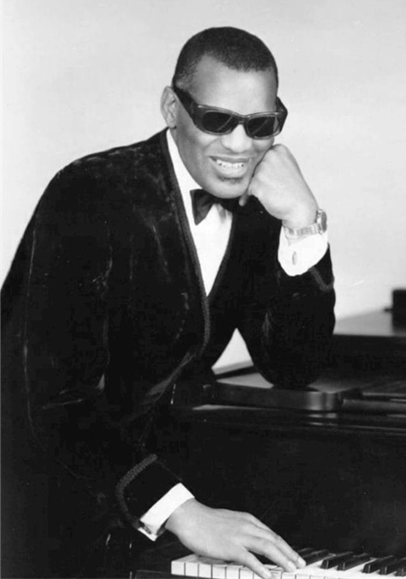
Also popular during the 50s were Doo-wop groups such as The Platters, The Drifters and others which had a softer and more romantic sound. In the late-fifties, singers such as Ray Charles and Sam Cooke combined Blues, Gospel and Jazz into a soulful sound that was a preface to the Soul Music of the 60s. Blind since the age of seven, Charles was not only a great singer but a talented musician. Sam Cooke’s career was short but fruitful. His Gospel roots could clearly be heard in his soulful singing. So much so that he was often called “The King of Soul.”
The 60s was a decade of rebellion, Civil Rights and civil discourse often reflected in its music and style of dress. By the mid-sixties, the clean-cut look of the 50s was superseded by long hair, bell-bottom pants and miniskirts. Gone, was the straight processed hair of Black artists — abandoned in favor of the Afro which reflected their affinity with Africa, and moreover, with themselves. They rejected the term Negro, in favor of black or Afro-American. Black people rebelled against injustice at home and white people rebelled against the Vietnam War abroad.
The Baby Boomers had come of age and with it came a disdain for the umbrella of war from which they were conceived. As in previous decades, African American musicians and vocalists were the pacesetters: from the soulful sounds of Motown and the gospel-like songs of Aretha Franklin that demanded respect — to the austere electric Rock of Jimi Hendrix.
Although centered in Detroit, MI, Motown was more than a city; it was the voice of America. As blacks migrated from the South to the Motor City, they forged the sound of a nation. Motown helped to transform the Rock and Roll and Doo-wop sound of the 50s into Soul Music of the 60s. Aretha’s style of singing was so soulful and so powerful that it made you feel like saying “Hallelujah” after hearing her sing.
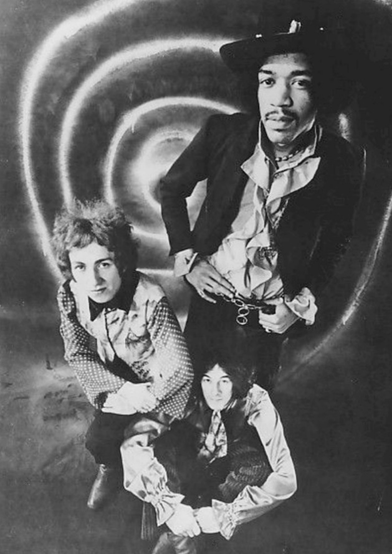
Hendrix got his start with the Isley Brothers and also played in Little Richard’s band. Known for his unique playing style and on-stage theatrics, such as playing the guitar with his teeth and setting it on fire. He was instrumental in transforming Rock and Roll into Rock. During his lifetime he was idolized by other Rock guitarists. Although other black musicians had crossed over to white audiences, Hendrix was a black star in a genre comprised primarily of whites and included white members in his band.
The British Invasion of The Beatles, The Rolling Stones, Eric Clapton, and others was also stimulated by African American music. The Blues was a gift to them, and it returned to America in different draping. In fact, The Rolling Stones took their name from a Muddy Watters song. Yet, most white Americans saw this music as something different and of foreign origin.
The 1969 Woodstock concert was a seminal moment as black and white artists united under the banner of Peace, Love and Music. Woodstock was the culmination and the reflection of a turbulent decade — plagued by assassinations of American leaders, America’s confrontation with its hypocritical past and the direction of its future. It was, however, the popularity of this concert that convinced Miles Davis to develop an electric Jazz band which gave birth to Jazz Fusion, Jazz Funk and Smooth Jazz.

Moreover, Marvin Gaye’s What’s Going On and Mercy Mercy Me along with Stevie Wonder’s Music of my Mind and Superstition were both a reformation on the Motown sound of Smoky Robinson, The Supremes, The Temptations and others of the 60s and a window into the music and mindset of the 70s. Furthermore, in the late 60s, James Brown, Sly and the Family Stone and others helped to lay the foundations of what would become the Funk of the 70s. In the early 70s, the music of Isaac Hayes, Barry White, Curtis Mayfield and Gill Scott-Heron included rap, although it was not called it at the time.
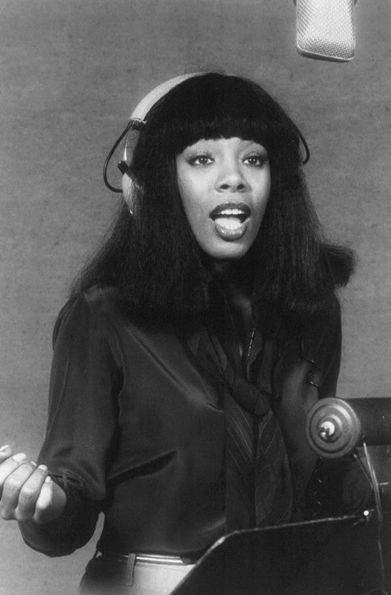
In the 70s, Funk, Disco and Jazz Fusion conquered the airways and would give birth to Rap and Hip-hop music. The music of Earth, Wind and Fire, Parliament, and Donna Summer helped to define a new decade of Soul Music. Frequently referred to as Old School, the music of this decade had a profound impact on Rap and Hip-hop music which sampled its funky music to produce a new genre that has lasted decades. During an era, in which the CD became the widespread music media, young rappers went in search of LPs to scratch; thus, overlaying raps atop of sampled 70s beats.
In the 80s, the music and showmanship of Michael Jackson, reminiscent of the 50s Rock and Rollers, helped to define the music video and further heightened the Rap and Hip-hop culture. Jackson’s music was produced by Quincy Jones, a thirty-year composer of Jazz and Pop. Their collaboration began in 1979 with the hit album Off the Wall. A child protégé of the Motown era, ”The King of Pop”, as Jackson was so often called, was a megastar, treated like royalty and admired around the world. It was not necessarily the music of Michael Jackson that the new generation of rappers gravitated toward, but rather his showmanship.
The sampled music of 70s groups such as Chic’s Good Time (1979) and contemporary sounds such as Herbie Hancock’s Rockit (1983), which featured synthesizers and drum machines to produce unique sounds without a band, became the core of the early Rap and Hip-hop sound. Breakdancing, a new and innovative style of dancing that was frequently driven by Rap and Hip-hop, was also a product of the 80s.
Such techniques set the stage for N.W.A, Dr. Dre, 2Pac, Biggie, and others that would emerge in the 90s as part of the Gangsta Rap craze. Although previous styles often included racy lyrics in their song, the use of profanity, the N word and the degradation of women in the form of the B word, along with the glorification of violence, was viewed by many as a bridge too far. As in other genres, these rappers became the mentors and models of a new generation of rappers, including: Jay-Z, Kanye West, 50 Cent, and others.
Hence, the current dominance of Rap and Hip-hop is just one link in a long chain of music — from the slave plantations of the South, to the modern-day. From the syncopated rhythms of Joplin to the synthesized melodies of Dr. Dre, Black Music has defined “what is hip”, before it hopped over to other forms of music and it has been a constant ambassador of American culture. Although the allure of freedom has always been the linchpin of America, it is somewhat ironic that it was the music of those held in bondage for centuries that helped to convey and display this message.
The embedded links represent a discography and history of 20th century African American music.
📝 Save this story in Journal.
🌎 Wake up every Sunday morning to the week’s most noteworthy stories in Society waiting in your inbox. Read the Noteworthy in Society newsletter.
